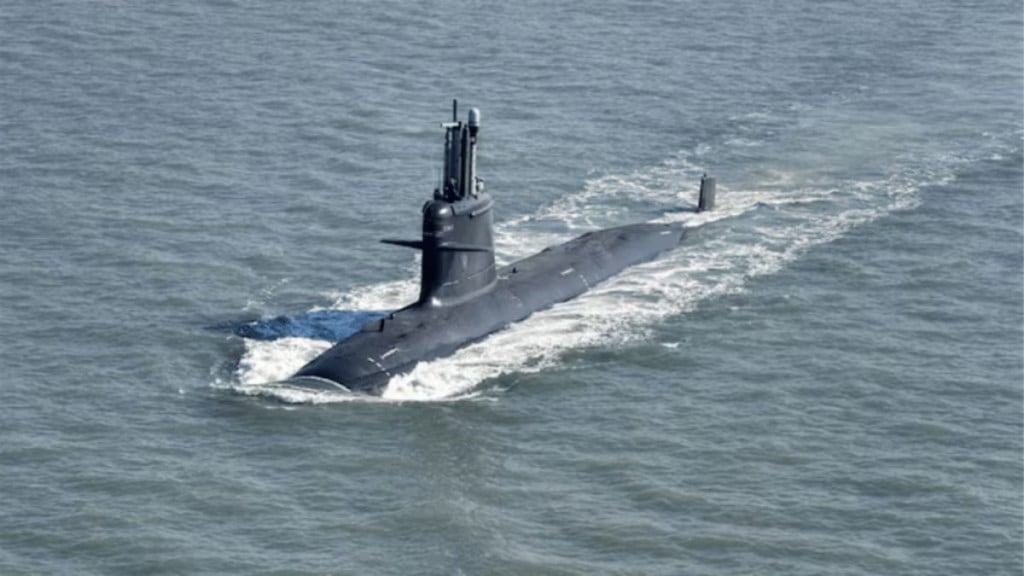India’s Defence Acquisition Council (DAC) is on the cusp of a monumental decision regarding the selection of a bidder for the P75(I) submarine project, which is valued at a staggering Rs 70,000 crore. The project is crucial for modernizing India’s submarine fleet, with a focus on integrating Air Independent Propulsion (AIP) technology to enhance stealth and operational capabilities.
With the DAC’s upcoming meeting, the final choice is expected to be made between two strong contenders: MDL (Mazagon Dock Shipbuilders Limited) paired with Germany’s ThyssenKrupp Marine Systems (tKMS), and L&T collaborating with Spain’s Navantia.
Technical Oversight: The Path to Final Decision
The selection process has been intricate and closely examined, particularly regarding the eligibility of bids based on technical criteria. A technical oversight committee from India’s Ministry of Defence has assessed the submissions and confirmed that MDL’s bid, along with ThyssenKrupp Marine, qualifies under the laid-out criteria. The L&T-Navantia proposal, however, did not meet the required technical standards, mainly due to issues related to the AIP system.
Also read: https://www.financialexpress.com/business/defence/project-75-i-who-will-wingermany-or-spain/
What is the next stage?
As the evaluation moves forward, the next stage will involve opening MDL’s commercial bid, followed by extensive discussions on both technical and financial terms. Once this is completed, the bid will be submitted for approval to higher authorities, paving the way for contract finalization.
The Strategic Role of AIP Technology
A critical factor in the P75(I) project is the inclusion of an advanced AIP system, which will allow submarines to operate without the need to surface or use a snorkel for extended periods. This cutting-edge technology is pivotal for enhancing India’s naval stealth and long-range capabilities.
Also Read: https://www.financialexpress.com/business/defence-indo-german-collaboration-on-project-75-i-could-tkms-be-the-chosen-one-3476645/
FinancialExpress.com has reported previously, the contenders for the AIP technology—Germany’s TKMS and Spain’s Navantia—offer different solutions, each with its own strengths and challenges. While TKMS has a proven track record with smaller submarines, Navantia’s bioethanol-based AIP is still undergoing development and won’t be available until 2026. The selection of AIP system will not only impact operational performance but also shape the strategic defence ties between India and these European nations.
Implications for India’s Naval Strategy
The decision to choose between TKMS and Navantia is not merely a technical evaluation but a strategic one. If TKMS is chosen, it could strengthen India-Germany defence relations, promoting deeper technological collaboration. On the other hand, a preference for Navantia would bring India closer to Spain and enhance its engagement with European partners in defence.
Beyond the technical aspects, the decision will have long-term implications for India’s naval strategy. The P75(I) submarines, expected to be delivered starting in 2032, are set to be a cornerstone of India’s maritime capabilities for decades. The project aims to build six new submarines equipped with the latest stealth and offensive capabilities, crucial for India’s dominance in the Indo-Pacific region.
Timeline for Delivery: The Path to Deployment
According to sources in the defence and security establishment, the first submarine under the P75(I) project is expected to be delivered in seven years from the date the contract is signed. This means that if the deal is finalized in 2025, the first of the six submarines could be ready for deployment by 2032. Given the complexity of the project and the cutting-edge technology involved, the timeline allows for rigorous testing, trials, and integration of AIP systems, ensuring that the submarines meet the Indian Navy’s stringent operational requirements.
While the project timeline is ambitious, delays are not uncommon in defence procurement, especially for high-tech, large-scale projects like this. However, once the submarines enter service, they will significantly enhance India’s underwater capabilities, offering enhanced stealth, endurance, and strike potential in strategic maritime regions.
Looking Ahead: A Delayed but Critical Decision
The ongoing delays in finalizing the P75(I) contract have added urgency to the situation. The Indian Navy’s field evaluation report, submitted late last year, indicated that the TKMS submarine met all technical requirements, while L&T and Navantia have contested that their proposal also met the necessary criteria. After careful consideration, the Defence Ministry’s technical committee concluded that L&T-Navantia’s bid was not up to standard.
With both technical and commercial evaluations now at a critical juncture, the DAC’s upcoming meeting will likely bring clarity.

